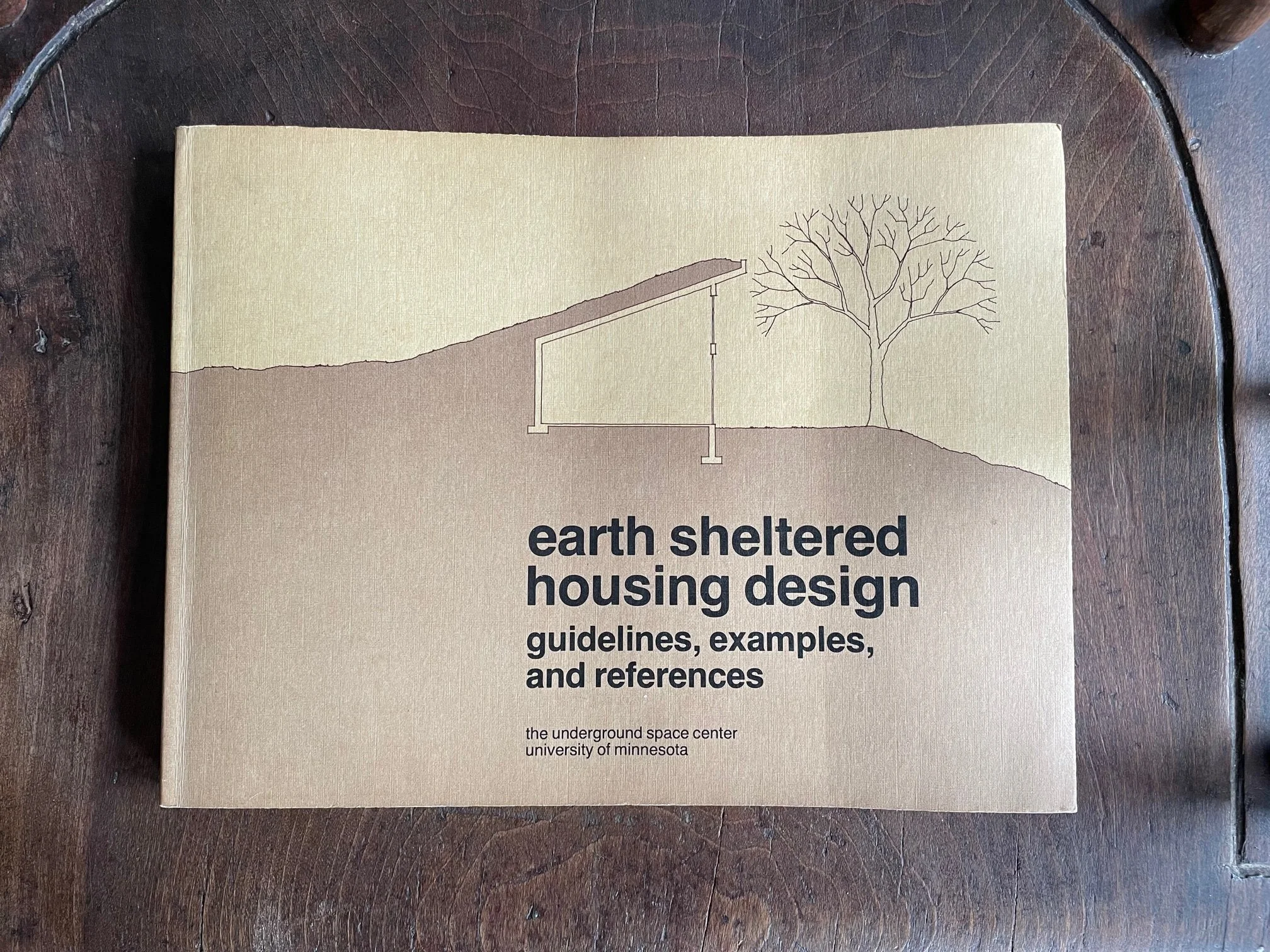Earth Sheltered Housing Design by The Underground Space Center University of Minnesota
“An important factor in controlling the energy required to heat or cool a building is the ‘thermal mass’ involved. This is simply the heat capacity which is the amount of energy required to raise the temperature by 1 degree C. A building having a large thermal mass within the insulation can therefore store a large amount of energy, so that during the day solar energy entering the south windows can be stored within the structure’s thermal mass and the temperature will rise slightly and slowly throughout the day. During the night there will be a net heat loss. Heat will transfer from the thermal mass to the inside air so that the temperature will fall slowly through the night. ON the other hand a building with a low thermal mass cannot store much energy per degree rise and therefore the incoming solar energy will quickly heat that section of the building to an uncomfortably high temperature, possibly leading to a local cooling requirement. Since little energy is stored, the temperature will fall rapidly during the night and heating will be required.
”The thermal mass of soil surrounding a building acts in a similar way and as shown in the previous figures will reduce the temperature variation felt by the exterior of the structure. In addition to these energy benefits the earth protects the building from expansion and contraction and especially from freeze/thaw damage. It is worth emphasizing that in the case of a power failure during extremely cold weather the temperature within an earth protected building will not fall below freezing so that no damage will be done and the building will still be habitable even over long periods. As we now surface buildings in these conditions rapidly drop in temperature, pipes freeze causing great damage and the building is not habitable. Earth protection therefore reduces the need for an external energy source from a matter of survival to one of comfort control. This aspect is particularly noteworthy for remote buildings such as farm buildings, ranger houses and holiday cabins.”
-UM, 1978



